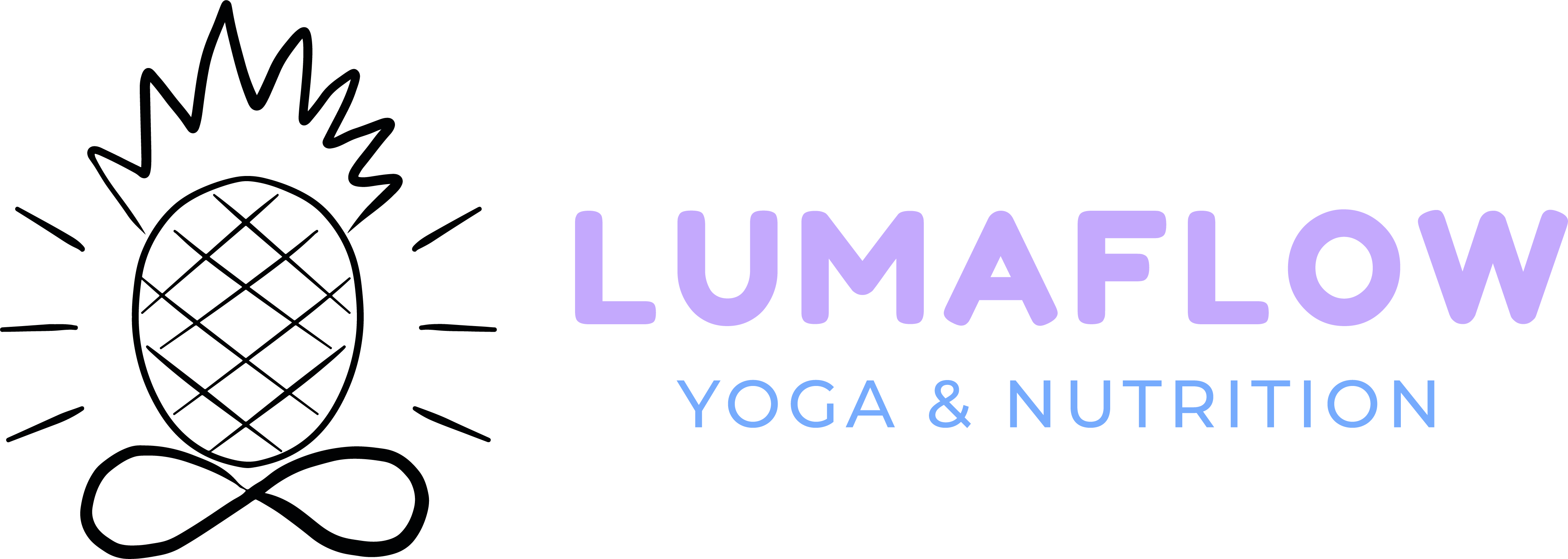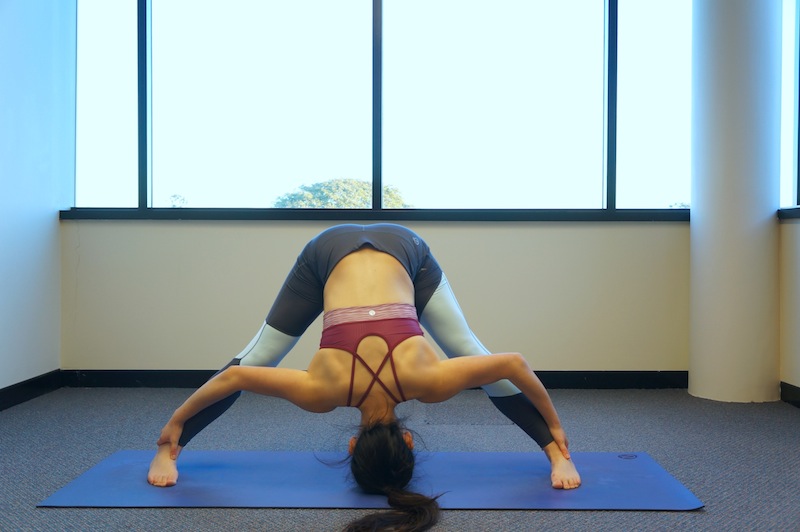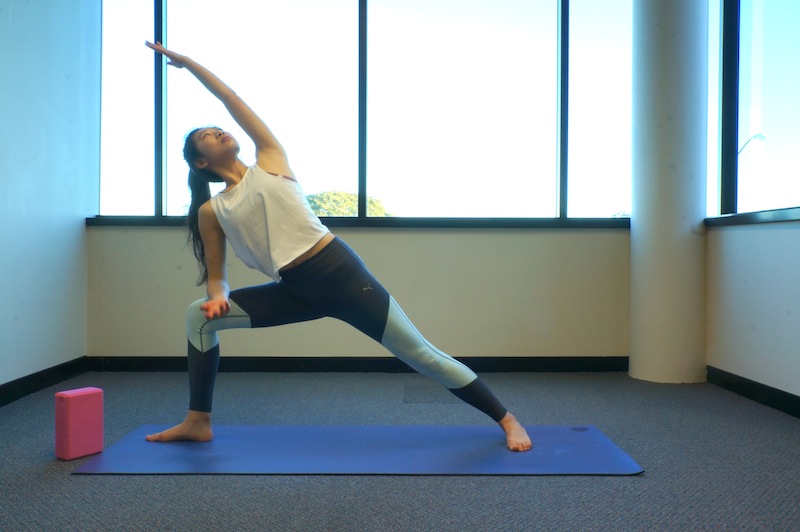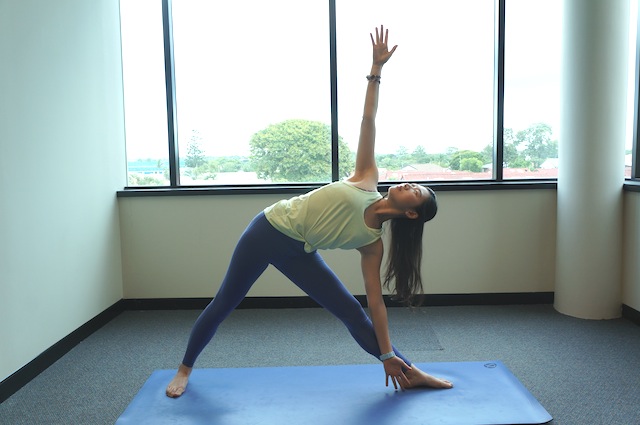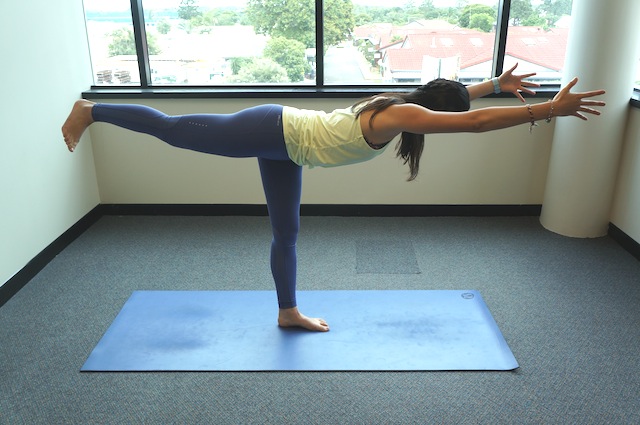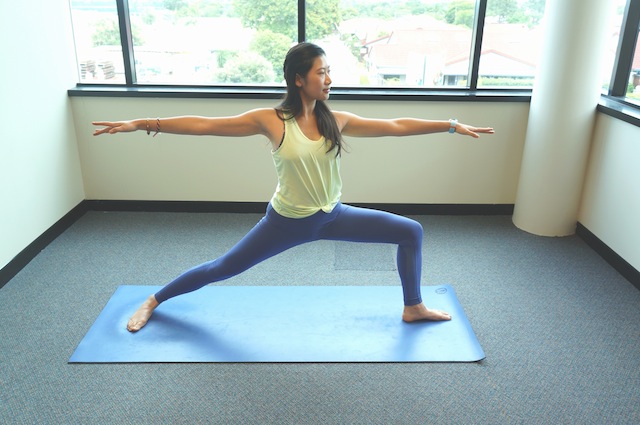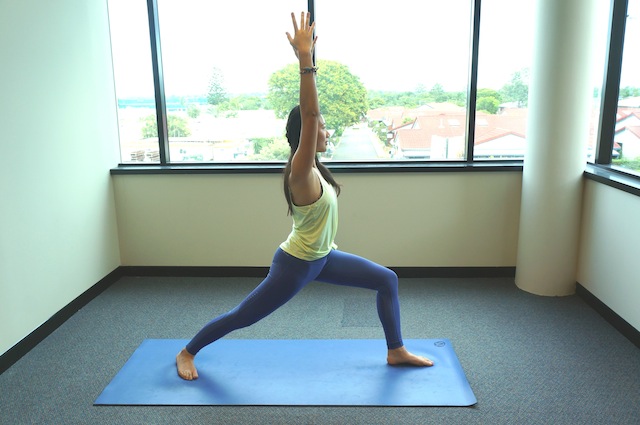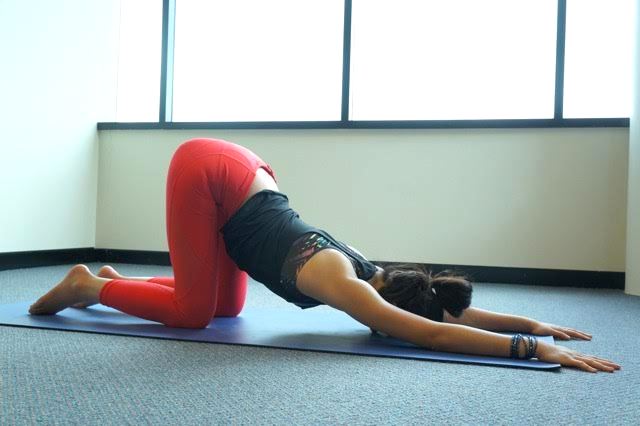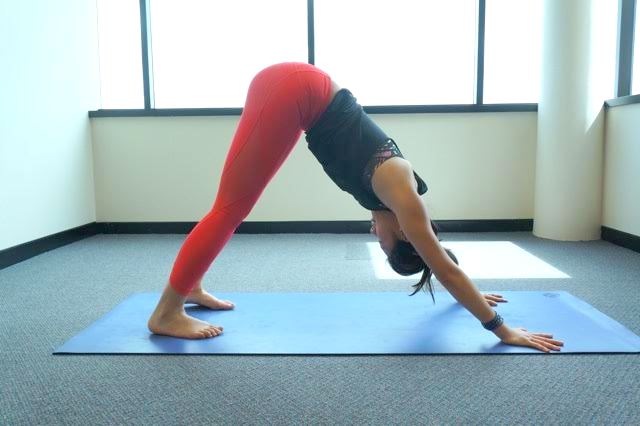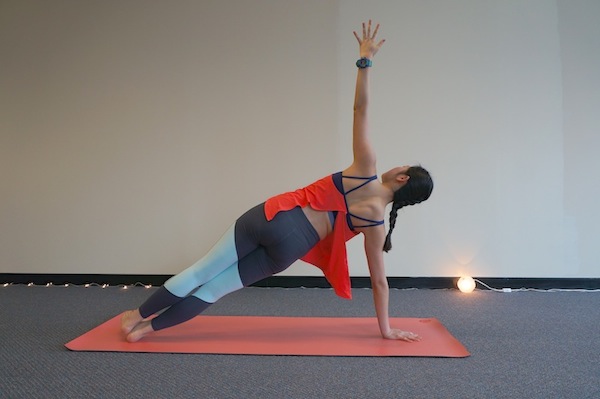A juicy hip-opener that can become quite intense, goddess pose is great for opening the hips, groin and knees, and strengthening the thighs, buttocks, calves and ankles. SANSKRIT NAME Utkata Konasana ALIGNMENT & VARIATIONS Beginning in a wide legged stance (like...
RECIPES
Free Dietitian-
Approved Recipes
Food is fuel – but food is also meant to be enjoyed! Healthy eating does not have to be complicated, expensive or bland. These recipes are simple, nutrient dense and sure to satisfy your taste buds!
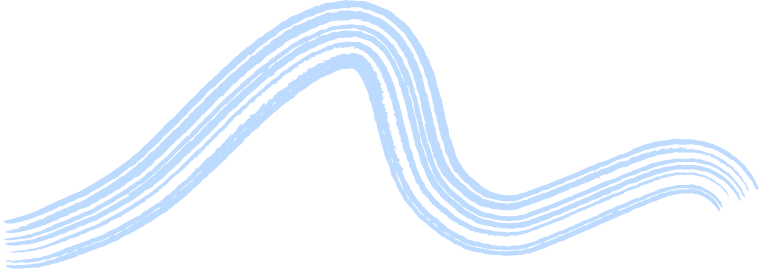

Categories
POSE OF THE MONTH: WIDE LEGGED FORWARD FOLD
SANSKRIT NAME Prasarita Padottonasana ALIGNMENT & VARIATIONS Standing with legs wide, toes pointing forward, hands on hips Inhale spine long, draw belly button back towards spine Exhale, fold forward, chest leading forward Palms down on mat, directly underneath...
POSE OF THE MONTH: SIDE ANGLE POSE
SANSKRIT NAME Utthita Parsvakonasana ALIGNMENT & VARIATIONS Begin in Warrior II Rest the right forearm on top of the right thigh, palm facing up - avoid dumping weight into forearm (should just be lightly touching) Extend left arm up towards sky or up and over the...
POSE OF THE MONTH: TRIANGLE POSE
SANSKRIT NAME Utthita Trikonasana ALIGNMENT & VARIATIONS Beginning in Warrior II, straighten the front leg, keeping a micro-bend in the knee to avoid hyper-extending Ground down through the big toe and all four corners of the front foot to help balance Imagine...
POSE OF THE MONTH: WARRIOR III
The final Warrior pose in this series is Warrior III. Still remembering the strength and softness in our previous Warriors, but this time bringing it together with a balancing position. SANSKRIT NAME Virabhadrasana III ALIGNMENT & VARIATIONS Starting in Warrior I...
POSE OF THE MONTH: WARRIOR II
Next up in our Warrior series is Warrior II - one of my personal favourites. Starting to open up the chest, shoulders and hips. Still practicing that balance between ease and effort, strong and soft. SANSKRIT NAME Virabhadrasana II ALIGNMENT & VARIATIONS Front...
POSE OF THE MONTH: WARRIOR I
Preparing to go through our Warrior poses in these next few months - strong, masculine poses that challenge us both physically and mentally. Learning to keep the muscles of the body strong to hold the pose, whilst keeping the gaze, the drishti, the breath, the mind...
POSE OF THE MONTH: PUPPY POSE
Puppy pose, or melting heart pose, is a beautiful heart opener to stretch out the arms, shoulders and chest, as well as open up the spine, upper back and lower back... SANSKRIT NAME Uttana Shishosana ALIGNMENT & VARIATIONS Beginning in table top position,...
POSE OF THE MONTH: DOWNWARD FACING DOG
It's almost impossible to go through a yoga class without doing at least one downward-facing dog... A challenging pose for both beginner yogis and more experienced yogis who may not have practiced in a while, downward dog eventually becomes a much-cherished resting...
POSE OF THE MONTH: SIDE PLANK POSE
Starting off the New Year with our December POM's close relative - side plank pose! SANSKRIT NAME Vasisthasana ALIGNMENT & VARIATIONS Bottom hand directly underneath shoulder, fingers spread, middle finger pointing forward Press down through knuckles of fingers to...
POSE OF THE MONTH: GODDESS POSE
by yoga admin | Oct 2, 2017 | Pose of the Month, Yoga, Yoga Practice Tips
A juicy hip-opener that can become quite intense, goddess pose is great for opening the hips, groin and knees, and strengthening the thighs, buttocks, calves and ankles. SANSKRIT NAME Utkata Konasana ALIGNMENT & VARIATIONS Beginning in a wide legged stance (like...
POSE OF THE MONTH: WIDE LEGGED FORWARD FOLD
by yoga admin | Sep 1, 2017 | Pose of the Month, Yoga, Yoga Practice Tips
SANSKRIT NAME Prasarita Padottonasana ALIGNMENT & VARIATIONS Standing with legs wide, toes pointing forward, hands on hips Inhale spine long, draw belly button back towards spine Exhale, fold forward, chest leading forward Palms down on mat, directly underneath...
POSE OF THE MONTH: SIDE ANGLE POSE
by yoga admin | Aug 4, 2017 | Pose of the Month, Yoga, Yoga Practice Tips
SANSKRIT NAME Utthita Parsvakonasana ALIGNMENT & VARIATIONS Begin in Warrior II Rest the right forearm on top of the right thigh, palm facing up - avoid dumping weight into forearm (should just be lightly touching) Extend left arm up towards sky or up and over the...
POSE OF THE MONTH: TRIANGLE POSE
by yoga admin | Jul 4, 2017 | Pose of the Month, Yoga, Yoga Practice Tips
SANSKRIT NAME Utthita Trikonasana ALIGNMENT & VARIATIONS Beginning in Warrior II, straighten the front leg, keeping a micro-bend in the knee to avoid hyper-extending Ground down through the big toe and all four corners of the front foot to help balance Imagine...
POSE OF THE MONTH: WARRIOR III
by yoga admin | Jun 5, 2017 | Pose of the Month, Yoga, Yoga Practice Tips
The final Warrior pose in this series is Warrior III. Still remembering the strength and softness in our previous Warriors, but this time bringing it together with a balancing position. SANSKRIT NAME Virabhadrasana III ALIGNMENT & VARIATIONS Starting in Warrior I...
POSE OF THE MONTH: WARRIOR II
by yoga admin | May 1, 2017 | Pose of the Month, Yoga, Yoga Practice Tips
Next up in our Warrior series is Warrior II - one of my personal favourites. Starting to open up the chest, shoulders and hips. Still practicing that balance between ease and effort, strong and soft. SANSKRIT NAME Virabhadrasana II ALIGNMENT & VARIATIONS Front...
POSE OF THE MONTH: WARRIOR I
by yoga admin | Apr 1, 2017 | Pose of the Month, Yoga, Yoga Practice Tips
Preparing to go through our Warrior poses in these next few months - strong, masculine poses that challenge us both physically and mentally. Learning to keep the muscles of the body strong to hold the pose, whilst keeping the gaze, the drishti, the breath, the mind...
POSE OF THE MONTH: PUPPY POSE
by yoga admin | Mar 7, 2017 | Pose of the Month, Yoga, Yoga Practice Tips
Puppy pose, or melting heart pose, is a beautiful heart opener to stretch out the arms, shoulders and chest, as well as open up the spine, upper back and lower back... SANSKRIT NAME Uttana Shishosana ALIGNMENT & VARIATIONS Beginning in table top position,...
POSE OF THE MONTH: DOWNWARD FACING DOG
by yoga admin | Feb 3, 2017 | Pose of the Month, Yoga, Yoga Practice Tips
It's almost impossible to go through a yoga class without doing at least one downward-facing dog... A challenging pose for both beginner yogis and more experienced yogis who may not have practiced in a while, downward dog eventually becomes a much-cherished resting...
POSE OF THE MONTH: SIDE PLANK POSE
by yoga admin | Jan 7, 2017 | Pose of the Month, Yoga, Yoga Practice Tips
Starting off the New Year with our December POM's close relative - side plank pose! SANSKRIT NAME Vasisthasana ALIGNMENT & VARIATIONS Bottom hand directly underneath shoulder, fingers spread, middle finger pointing forward Press down through knuckles of fingers to...
